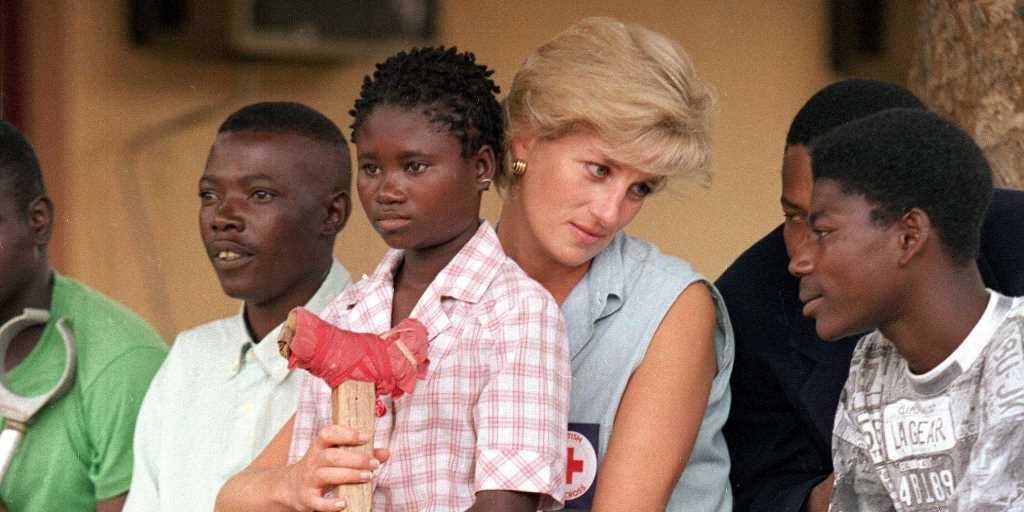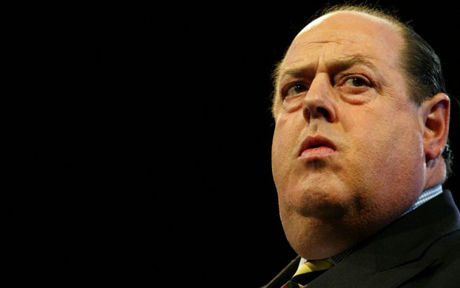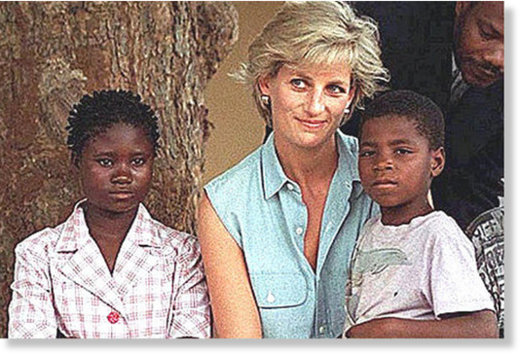Comment: On 31 August 1997, British Princess Diana, her boyfriend Dodi al-Fayed and their driver Henri Paul died as a result of injuries sustained in a horrific car crash in the Pont de l'Alma road tunnel in Paris, France. But was this a tragic accident, or was it made to look like one?
Diana's death caused a profound and global outpouring of grief, with her funeral on 6 September 1997 watched by an estimated 2.5 billion people. More than just a celebrity figure, Diana was loved because she used her fame to draw attention to the victims of wars her patrician peers were (and are) instrumental in causing and perpetuating.
The following article by Joe Quinn, first published in 2013, reviews the case and the findings of a British documentary (Unlawful Killing) that was screened at the 2011 Cannes Film Festival, and a couple of other film festivals, before being 'disappeared down the memory hole'.
The mystery surrounding the deaths of Princess Diana and Dodi al-Fayed 16 years ago today was revived recently by the claims of a British SAS sniper whose testimony was part of the trial of another SAS soldier who was convicted of illegal weapons possession. The parents-in-law of the SAS sniper in question, known only as "Soldier N", claim that he boasted to his wife that the "SAS was behind Princess Diana's death".
Unsurprisingly, the media reaction to the story has been to dismiss it, citing, incorrectly, that the investigation into Diana and Dodi's deaths was conclusive, that it was an accident, and that there was "no evidence of conspiracy". In fact, this alleged "new evidence" has done little more than provide the media with an opportunity to, once again, ridicule any idea that there was anything strange about the events in Paris that night. It is also interesting to note that, in just a few weeks, a new film about Diana's life, entitled 'Diana', will be released.
The general consensus among the great British and world public seems to be that Diana and Dodi and their driver Henri Paul died as a result of a car crash caused by pursuing paparazzi. It's rather perplexing that this should be the case because the jury in the official 3-month-long inquiry into their deaths returned a verdict of "unlawful killing" and the paparazzi were exonerated. How does this happen? Well, how did it come to pass that 50% of American citizens believed that Saddam Hussein was involved in the 9/11 attacks, despite the fact that no one, not one person, ever made such a statement publicly?
Answer: The mainstream media's real job is not to report the news but to 'catapult the propaganda' that the 'elite' hope will become the new 'reality' or historical record.
Two years ago, British film director Keith Allen made an attempt to release a documentary about the death of Diana and Dodi. Due to the content of the film however, Allen was legally prevented from making it widely available to the public. Attempts to upload it to video hosting sites have also been thwarted. The documentary presents a reasonable case that Diana and Dodi were murdered by elements of the British state, with the support and connivance of their French counterparts.
Just some of the details revealed in the documentary include:
- All CC TV cameras at the entrance to the Alma tunnel in Paris (alma means 'soul' in Spanish) were mysteriously switched off at the time of the 'crash'.
- The seat-belts in the back of the Mercedes in which Diana and Dodi were traveling may have been tampered with to make them inoperable.
- The paparazzi were left far behind Diana and Dodi's Mercedes by the time they entered the Alma tunnel. However, four motorbikes and a white Fiat Uno car surrounded the Mercedes in the tunnel. According to a witness, Brian Anderson, who was a passenger in a passing taxi, "a significant flash of light" followed by a "very loud bang" occurred before Diana's Mercedes crashed violently into one of the pillars of the tunnel. Another witness, Francois Levistre, told the inquest into Diana's death that he was driving in front of the Mercedes when the flash lit up the underpass "like the light from a speed camera". He suggested the flash came from a motorbike which overtook the Princess' car seconds before impact. He also alleged that one of two people on the motorcycle walked over to the wreckage and gave a "mission accomplished" hand gesture.
- Dodi al-Fayed's father claimed that the white Fiat Uno involved in the crash belonged to French photojournalist Jean-Paul James Andanson, that Andanson was a security services agent and that his car was being used by British MI6. Investigators found that the journalist was at home with his wife at the time of the crash and that Adanson's car was not the car involved in the murder of Diana. Paint samples from 4,000 other white Fiat Uno cars were tested against the traces on Diana's Mercedes but no match was found. In May 2000, Andanson was discovered inside a burnt-out BMW car in a forest in Southern France. His body was in the driver's seat while his severed head was between the front seats. There was a hole in the left temple of the head. Authorities ruled it a 'suicide'. His family contested this conclusion stating that he was in high spirits having just started a new job.
- A French rescue team and doctor Jean Marc Martino took immediate control of the crash scene and the victims. It took them 37 minutes to extract the still conscious Diana from the back of the car, despite the fact that the back of the car was undamaged, so there should have been no significant delay in removing her.
- 81 minutes elapsed before the ambulance departed the scene of the crash for the nearest hospital.
- It was 103 minutes (a further 22 minutes) before the ambulance arrived at the nearby hospital (a journey that should have taken no more than 5 minutes).
- At the official inquest, experts agreed that Diana's life could have been saved if she had received normal and prompt medical attention.
- Doctors Pepin and LeComte who conducted tests on the blood samples of the driver Henri Paul appear to have used someone else's blood to determine that Paul was drunk, when he was not. Both of these doctors were legally required to attend the inquest, but refused to appear. The French Ministry of Justice protected them, citing reasons of "public order" for their refusal to attend, and officially the reason was "protection of state secrets and the essential interests of the nation." A government that withholds information in the interest of "national security" or to "protect state secrets" is essentially saying that they realise that if the information became publicly available, it could provoke mass public disturbances. "Protecting state secrets" and "national security" are most often euphemisms for protecting the corrupt 'elite' from the people, and what the people might do if they knew the truth.
- In 2006, a team of scientists offered to conduct tests on the samples to determine who they belonged to. The French government declared, however, that the blood samples in question "no longer existed". There is also clear evidence that French police planted alcohol in Paul's apartment to support the claim that he was an alcoholic.
- British intelligence had developed a plan to assassinate a Serbian politician by causing his car to crash in a tunnel by flashing a strobe light at the driver.
- Many members of the British establishment, including the judiciary, police force and politicians, conspired to cover up the truth about the crash and the fact that Diana suspected she was going to be killed.
- British MP Nicholas Soames appears to be a psychopathic misogynist (one among many in the British establishment) who hated Diana. Soames was British Defence Minister under Conservative Prime Minister John Major (1994-97). Soames threatened Diana that she should back off from her high-profile campaign to end the use of land mines in third world countries and warned her that "accidents can happen". Soames is the Chairman of Aegis Defence Services, a British private mercenary company with overseas offices in Afghanistan, Bahrain, Iraq, Kenya, Nepal and the United States. As evidenced by video footage released in 2005, Aegis mercenaries were involved in the indiscriminate shooting and murder of Iraqi civilians during 'Operation Iraqi Freedom'.
Diana and Dodi were murdered to "protect the British monarchy" only insofar as the continued existence of the British monarchy is important to the civilian 'elite' because it lends legitimacy to their claim of 'natural' or 'divinely ordained' superiority over the people. It is, after all, the Queen that appoints governments and bestows knighthoods, peerages and other 'honors' on the chosen, and thereby confers regal legitimacy on those so honored and appointed. Of course, behind the scenes, it is 'her majesty's government' (i.e. the self-same civilian 'elite') that advises the sovereign on who gets what and when. Without this royal pomp and circumstance, the bestowing of titles by civilians on other civilians would look, for all the world, like a bunch of undeserving bureaucrats pumping themselves up far beyond their station.
Diana's divorce from Charles, her relationship with Dodi al-Fayed (a Muslim) and the possibility that she might expose some of the less than regal goings-on inside Windsor Castle threatened the public image, reputation and very existence of the British Royal establishment, but the threat was felt most keenly among the high-level securocrats in Whitehall and assorted pedophile peers who jealously guard their immoderate privileges and lifestyles.
Dodi al-Fayed was a film-maker (he produced the multi-Oscar-winning Chariots of Fire). His father was a wealthy man. Had he and Diana been allowed to live, we can only imagine what kind of films or documentaries he may have turned his hand to with Diana as his wife and inspiration. Given Diana's outspoken and compassionate nature, combined with her world-wide public appeal, what might she have said or done to bring people together and create a more peaceful world, had she been allowed to live? With the world as her stage and having the ears of billions, might the last 16 years that have brought us the interminable 'war on terror', the invasions of nations, the slaughter of so many innocents and the institution of a global police state, have been any different?
I suppose we'll never know.
But it is certainly a sad indictment on the nature and structure of our modern society that an open and loving heart coupled with a natural and widespread popularity is perceived as such a threat by our entrenched 'leaders' that their minds invariably turn to murder and cover-ups to 'solve the problem'. But that appears to be precisely what happened in the case of Diana, and she was certainly not the first victim. This particular story of the summary assassination of a popular hero with the potential to galvanize public opinion and set a positive example for the world is anything but new. And when the general public turns a blind eye to such events, the 'elite' are emboldened and encouraged to prepare further and more egregious acts of brutality against the public good.
Watch the 'Unlawful Killing' documentary for yourself below:






The bridge was named to commemorate the Battle of Alma during the Crimean War.
The Battle of the Alma (20 September 1854) took place just south of the River Alma in the Crimea.
Alma (Ukrainian and Russian: Альма, Crimean Tatar: Alma)